GRUTA DOS ENXARÉUS

[Flores – Azores]


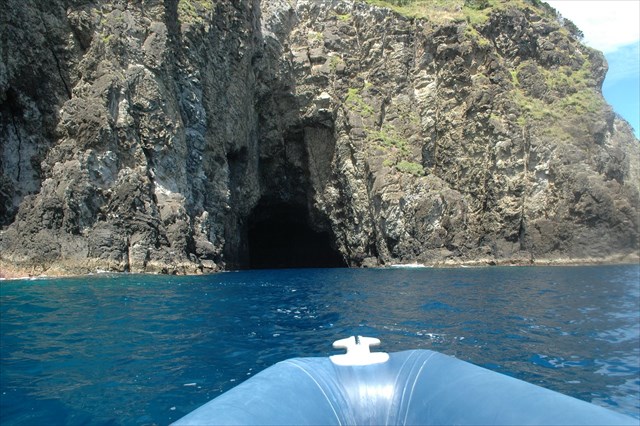
EARTHCACHE

PORTUGUÊS

Geologia da Ilha das Flores
(o “fim” ou o “início” da Europa…)
A ilha das Flores, data de 2,16 milhões de anos. Esta earth-cache (Gruta dos Enxaréus), está localizada na orla costeira em pleno Complexo de Base. No Complexo de Base incluem-se todas as formações e estruturas vulcânicas resultantes da atividade vulcânica submarina e emergente; esta unidade ocupa, naturalmente, os níveis vulcanoestratigráficos inferiores e aflora maioritáriamente na orla costeira, sobretudo na base e no sopé das escarpas costeiras e recuadas. Inclui sequências de brechas e tufo vulcânico e séries de lavas e piroclastos de natureza basáltica, intensamente palagonitizadas.
(Informação e imagens retirada do artigo “The Volcanotectonic Evolution of Flores Island, Azores (Portugal)”, de J. Azevedo, publicado no “Jornal of Volcanology and Geothermal Research)

Gruta dos Enxaréus
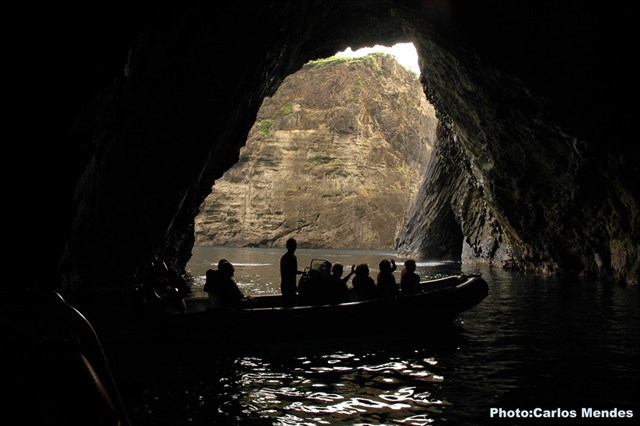
A Gruta dos Enxaréus, é uma formação geológicapeculiar localizada, entre Santa Cruz e Caveira, no promontório da Ponta da Caveira, na costa Este, próxima da freguesia da Caveira, concelho de Santa Cruz das Flores, ilha das Flores, arquipélago dos Açores. Encontra-se a 1,5 milhasmarítimas do Porto de Santa Cruz das Florese a 3,5 milhas marítimas do Porto das Lajes das Flores, nas coordenadas geográficas: Latitude39º25.592'N e Longitude31º08.298'W e devido á sua localização esta gruta só pode ser visitável de barco.
Esta gruta de origem vulcânicaapresenta-se como uma grande cavidade situada sita na base da falésia, junto ao mar, tendo uma dimensão e profundidade consideráveis.

Os fundos marítimos desta gruta e as imediações do promontórioonde ela se enquadra, incluindo os fundos do interior das fendas e de outras grutaslocalizadas no mesmo promontório, são formados principalmente, por calhaus rolados, blocos rochosos/basálticose pequenas clareiras de areia. São povoadas por uma enorme variedade de algasque se espalham desde o fundo à parede rochosa circundante
É possível observar nesta gruta uma grande variedade de vida marinha, sendo habitual a realização de mergulhosde observação desde junto à gruta como também ao longo da falésia e ao extremo do Ponta da Caveira.
A cota de profundidadetanto na gruta como na costa circundante é bastante o variável, dados os acentuados acidentes geológicos de origem vulcânica e também a variedade dos fundos que vão desde zonas de areias até a rochas basálticas de grande dimensão.
História da Gruta dos Enxaréus
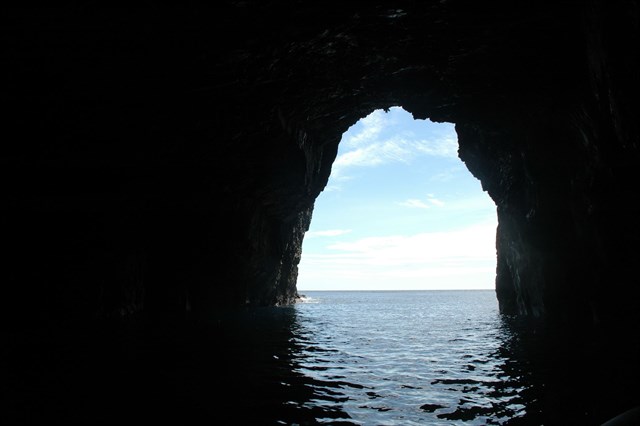
Esta formação geológica tem uma curiosa história que se inicia com o povoamento dos Açores, com as rotas comerciais que passavam por estes mares ocidentais do arquipélago à socapa das naus da Carreira da Índia. Foi, assim, durante séculos usada como esconderijo de piratas, corsários e contrabandistas, e é hoje uma das grandes atrações da ilha das Flores, fazendo portanto parte dos roteiros turísticos da ilha.
Uma das mais curiosas lendas contadas reza o seguinte:
“Estávamos nos finais de quinhentos. Um barco pirata foi detetado pela Armada das ilhas a tentar apanhar as embarcações que chegam das Índias, deu-se então início a uma perseguição. "Após um longo período de fuga e vendo que em mar aberto não era possível escarpar as forças militares da Coroa de Portugal, o barco pirata deu inicio ao um contorno da costa da ilha das Flores, cujo o capitão certamente já conhecia, e escondeu-se na Furna dos Enxaréus, saindo assim da vista das naus da Armada e escapando à mesma".
As Sete Maravilhas das Flores
A população das Flores, escolheu, entre 21 locais nomeados, os sete sítios mais bonitos.São eles: o ilhéu do Monchique, a Gruta do Galo, a Gruta dos Enxaréus, a Caldeira Negra, a Caldeira da Lomba, o Poço do Bacalhau e a Rocha dos Bordões.

PARA REALIZAR E REGISTAR ESTA EARTHCACHE:
PERGUNTAS:
Para “encontrar/registar” esta cache deverá: provar que esteve no local e responder às seguintes questões, enviando um email/mensagem de Geocaching, com as respostas, em português ou em inglês, para o nosso perfil.
Só depois, de enviar as respostas, e conforme as “guidelines” para as Earthcaches, deverá efetuar o seu registo!
Serão removidos todos os registos que não obedeçam a estes requisitos.
a) Qual é a origem desta gruta? Será de origem: vulcânica ou de erosão?
b) Como é constituído, geologicamente, o Complexo de Base?
c) Identifica o “tipo” (ou “tipos”…) de rocha que constituí o “arco” de entrada
desta gruta. Que “tipos” de planos o constituem?
d) Como é constituído o “fundo marítimo” desta gruta?
e) Identifica as estruturas e o tipo de rocha que constituem o teto desta cavidade.
f) Qual é o comprimento, largura e profundidade desta gruta?
g) Quantas aberturas existem na gruta?
h) TAREFA OBRIGATÓRIA:Deverá tirar uma foto sua, onde você apareça (ou com um papel/placa onde conste o seu nickname e a data da visita) e que comprove a sua presença no GZ desta EC - NÃO METASPOILERS. Esta foto deverá ser colocada no seu registo ou enviada por email ou sistema de mensagens de Geocaching, para o owner!
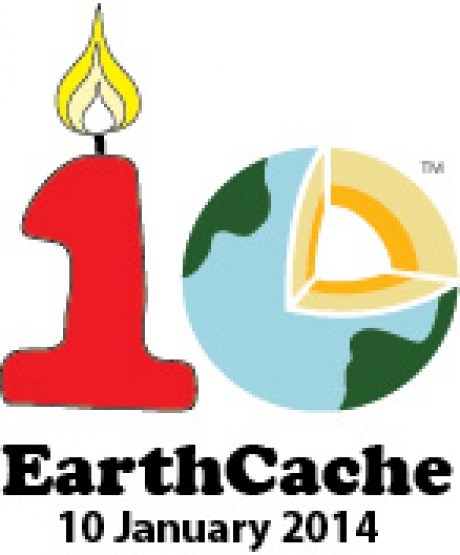
Não responderemos ao seu contato, a não ser que haja algum “problema” com as suas respostas ou registo.
AGRADECIMENTOS:
Agradecemos a especial colaboração do amigo Carlos Mendes, bem como do
Professor Doutor Victor-Hugo Forjaz - Vulcanólogo de Engenharia, Jubilado
e do Observatório Vulcanológico e Geotérmico dos Açores (OGVA)


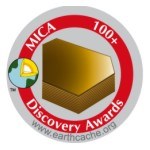
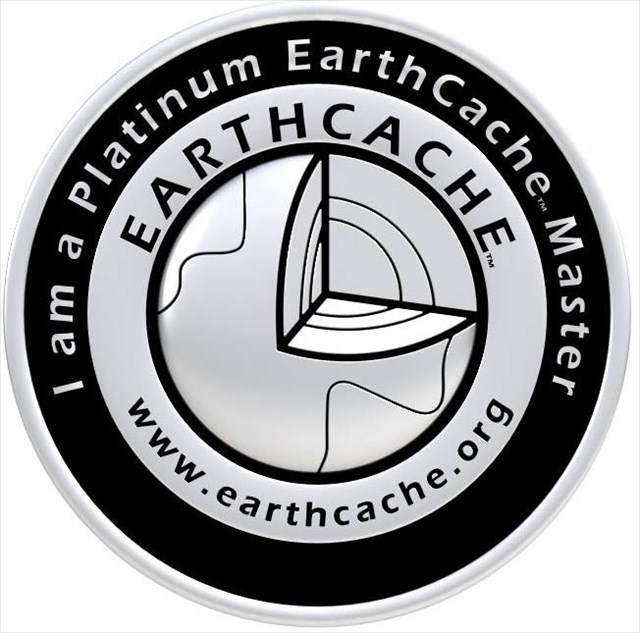

“ENXARÉUS” CAVE
[Flores - Azores]

ENGLISH

Geology of the Island of Flores
(the "end" or "beginning" of Europe ...)
The island of Flores, dated 2.16 million years old. This earth-cache (Cave of Enxaréus), is located on the coastline in full Base Complex. Base Complex includes all formations and volcanic structures resulting from submarine volcanic activity and emerging; this unit occupies naturally the lower “vulcanoestratigráficos” levels and arises mainly be on the coastline, especially at the base and at the foot of the coastal cliffs and indented. Includes sequences and tuff breccias and lavas and pyroclastics of basaltic nature series, intensely “palagonitizadas”.
(Information and pictures from Article “The Volcanotectonic Evolution of Flores Island, Azores (Portugal)”, from J. Azevedo, published in “Jornal of Volcanology and Geothermal Research)
Enxaréus’s Cave
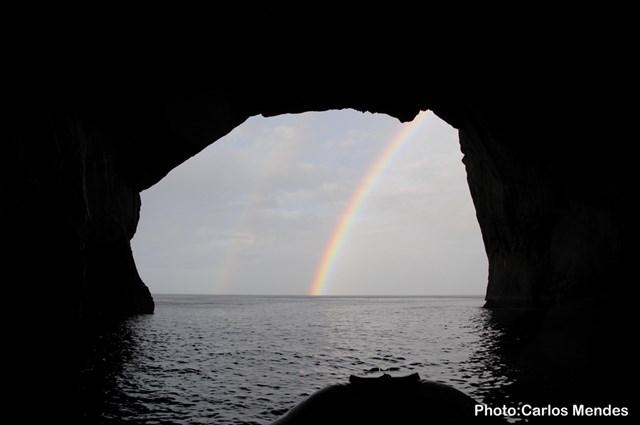
The Enxaréus’s Cave, is a peculiar geological formation located between Santa Cruz and Caveira, on the headland of Ponta da Caveira, on the east coast, close to Caveira’s parish of, County of Santa Cruz das Flores, Flores Island, Azores. Due to the Latitude and Longitude 31º08.298'W and 39º25.592'N: It lies 1.5 nautical miles from the port of Santa Cruz das Flores and 3.5 nautical miles from the port of Lajes das Flores, in geographic coordinates its location this cave can only be visitable by boat.
This cave of volcanic origin appears as a large cavity located at the base of the cliff by the sea, having a considerable size and depth.
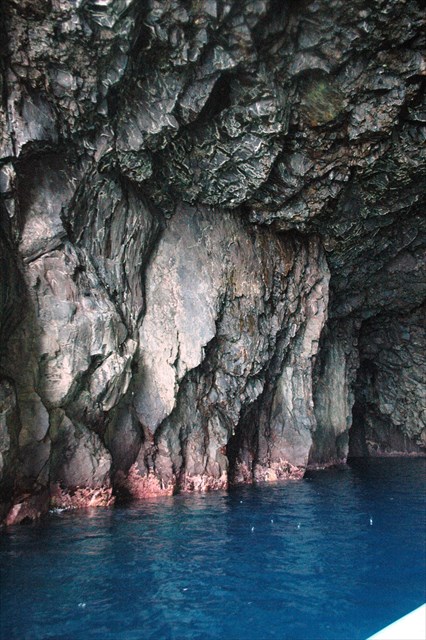
The seabed in this cave and the surrounding headland where she fits, including funds from within the crevices and other caves located on the same promontory, are formed mainly of rolling, rochososbasálticos blocks of sand and small clearings. They are populated by a wide variety of algae that spread from the bottom to the surrounding rock wall
You can observe a large variety of marine life in this cave, with normal conducting dives observation from near the cave as well as along the cliff edge and the tip of the Skull.
The depth coordinate both in the cave as the surrounding coast is quite variable, given the sharp geological formations of volcanic origin and also the variety of backgrounds ranging from areas of sand to large basaltic rocks.
History of Cave of Enxaréus
This geologic formation has a curious history that begins with the settlement of the Azores, with the commercial routes that passed through these western seas of the archipelago of the ships sneaky Career India. Was thus used for centuries as a hideout for pirates, privateers and smugglers, and is today one of the great attractions of the island of Flores, so part of the island tourist itineraries.
One of the most curious legends counted reads as follows:
"We were at the end of five hundred A.C. A pirate boat was detected by the Navy of the islands trying to catch the boats arriving from India, then initiated a chase. "After a long flight and seeing the open sea was not possible scarp military forces of the Crown of Portugal, the pirate boat began the shoreline of one island of Flores, whose captain certainly knew, and hid is ship in the Cavern Enxaréus, so the view of the ships of the Armada and escaping out the same. "
The Seven Wonders of Flowers
The population of Flores, chosen from 21 nominated sites, the seven most beautiful sites. They are: the islet of Monchique, the Cave of the Rooster, the Cave of Enxaréus, the Black Boiler, Boiler da Lomba, the Pit and the Rock Cod Bordões.
TO PERFORM AND LOG THIS EarthCache:
QUESTIONS:
To "find / register" this cache must: prove that visited the site and answer the following questions by sending an email / message Geocaching, with answers (in Portuguese or in English, only) to our profile.
Only later, sending the answers, and as the "guidelines" for EarthCaches should make your registration! They will be removed from all records that do not meet these requirements.
a) What is the origin of this cave? Is the source: Volcanic or erosion?
b) How is the Complex Base , geologically, constituted?
c) Identifie the "type" (or "types" ...) of rock that makes up the "arch"
input this cave. What kind of " geological " plans are there?
d) What are the characteristics of the "seabed" in this cave?
e) Identify the structures and the type of rock that are visible on the roof of
this cavity.
f) What is the length, width and depth of this cave?
g) How many openings are in the cave?
h) TASK (not optional): You must take a picture of yourself, where do you show up, (or with a paper / plaque with your geocaching nickname and the date of the visit) and that proves your presence in the GZ of this EC - no spoilers please. This photo must be placed in your log or sent by email or Geocaching messaging system, to the owner!

We do not respond to your touch, unless there is a "problem" with their answers or register.
THANKS
We appreciate the special collaboration of the friend Carlos Mendes, and of the
Professor Victor-Hugo Forjaz - Volcanologist Engineering, Emeritus
and Volcanological and Geotermic Observatory of Azores (OGVA)





